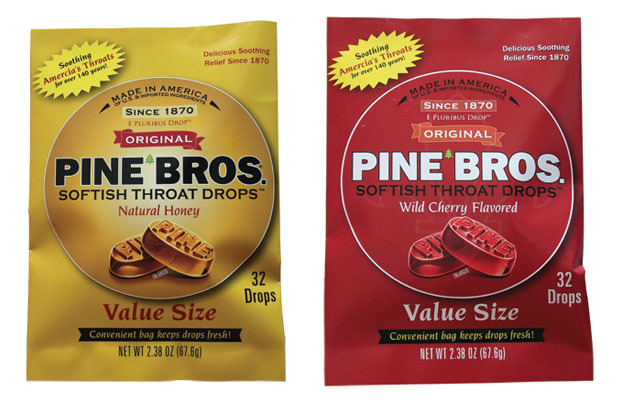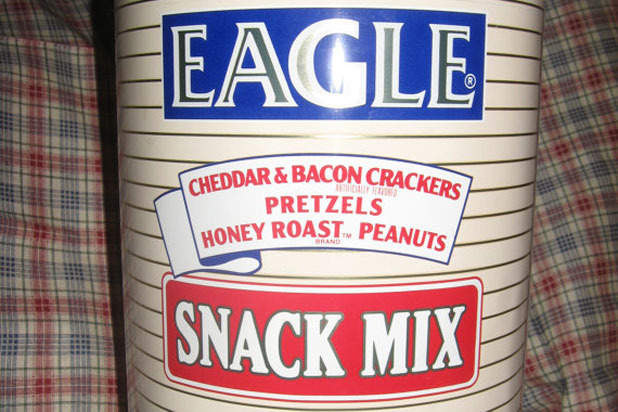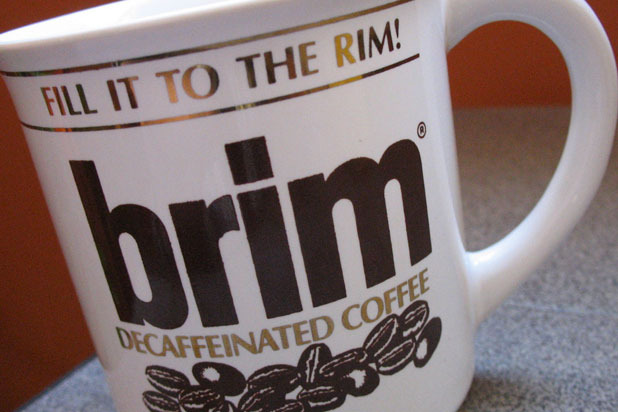Back From The Brink: 10 Food Brands That Refuse To Die Slideshow
This is an example of an iconic brand that's switched owners so many times it's a near-miracle that it's made its way out unscathed. Patrick Towle started the brand in 1887, and it was acquired by General Foods in 1927. In 1990 the company merged with Kraft, who sold the brand to Aurora Foods in 1997. Aurora then went bankrupt, so Log Cabin was sold to Pinnacle Foods. One problem? Pinnacle Foods also owns chief competitors Aunt Jemima and Mrs. Butterworth's. They could have easily just dropped the brand from its lineup, but instead just changed the formula so it doesn't use high-fructose corn syrup, thus differentiating it from the others.
9) Tang
Introduced to the American public at the height of the Space Age, in 1959, this orange-flavored drink entered national lore once it hitched a ride with the astronauts aboard the Gemini and Apollo missions. Made entirely of chemicals, it did however contain a lot of vitamin C and hit its peak during the '60s and '70s. It's come back down to Earth since then, and faces stiff competition from everything from Hi-C to real orange juice (and is far from owner Kraft Foods' top seller), but that tangy powder can still be found in just about every American supermarket.
8) Ovaltine
Invented in Switzerland around the turn of the 20th century, Ovaltine reached the height of its popularity from the 1930s through the '50s, when the brand sponsored child-friendly radio shows including Little Orphan Annie and Captain Midnight. Kids were encouraged to save proof-of-purchases, which could then be turned in for prizes including a secret decoder ring (as seen in the film A Christmas Story). New varieties and flavors were launched and discontinued over the years, and commercials for the drink mix were aired until 2007, when the company was sold to Novartis. Its now owned by Nestl, and while it still sells, the days of the Little Orphan Annie decoder rings are long gone.
7) Necco Wafers
These simple colored sugar wafers, available in eight flavors, were first produced all the way back in 1847, believe it or not. They were included in soldiers rations during WWII, and after the war the candy remained popular with both the GIs and their children. Sales bottomed out in the ensuing decades, and in order to enliven the brand in 2009 the entire formula was overhauled. The candies were made all-natural, they were softened up via the addition of glycerin, lime was eliminated altogether, and every other flavor received a makeover. Two years later, however, sales were down 35 percent because longtime customers stopped buying them, so in 2011 they switched back to the old formula.
6) Pine Brothers Softish Throat Drops
The line of honey-, cherry-, and licorice-flavored sore throat lozenges was invented in 1870, and over the years it changed hands a number of times, decreasing in popularity along the way. Eventually, Pine Brothers all but disappeared from the American marketplace. The brand was brought back from the dead a couple years ago, though, by the duo of entrepreneurs who helped develop Airborne supplements. They spent years tracking down the old recipes, reviving the old packaging design, and getting distribution, and the lozenges can now be found online, at many small retailers, and at pharmacies including CVS.
5) Eagle Snacks
Eagle is another one of those brands that doesnt really fit in with any parent companys portfolio, and could have been quietly discontinued years ago without anyone noticing. The brand was actually originally launched by Anheuser-Busch (an eagle is featured prominently in the AB logo), and its line of snacks, which included pretzels, peanuts, cheese crackers, and the like, were distributed to bars and airlines, intended to be eaten along with its beer. The brand proved unprofitable, though, and was sold to Procter & Gamble in 1996, who in turn sold it to River West Brands, a holding company dedicated solely to making sure that older, formerly well-known brands dont die out.
4) Brim Coffee
Once a household name, Brim Coffee met an unfortunate end when its parent company, General Foods, merged with Kraft, which also happened to own the more popular Maxwell House. Brim was sidelined for 15 years, most likely never to be heard from again, until you guessed it River West stepped in and snatched it up in 2007. Its making its comeback, and plans are to add some vitamins in to separate it from the herd. If all goes to plan, folks once again will soon be able to "fill it to the rim with Brim."
3) Quisp
Quaker Oats launched this sweet breakfast cereal as a mass-market item in 1965, and the little discs of sugary cornmeal remained a supermarket fixture until the late 1970s, when it was discontinued due to low sales. It didn't go completely extinct, however, and popped up sporadically for collectors' and nostalgics' sakes. Last year, however, Quaker decided to return the cult cereal to the mass market once and for all. It can be found in most supermarkets, and also purchased directly through the Quaker website.
2) Bonomo Turkish Taffy
The story of Bonomo's Turkish Taffy is one of the wildest to ever come out of the candy industry. Invented around the turn of the 20th century in Coney Island, N.Y., it first gained popularity though sales in Woolworth's stores, but it really took off in the 1950s. Kids were encouraged to "Crack it up!," smashing the wrapped bar of taffy into a hard surface in order to break it into bits, which could then be eaten separately, melting into a smooth goo. The brand was made even more popular through sponsorship of some of the earliest kid's shows, including The Magic Clown, and it was purchased at the height of its popularity by Tootsie Roll Industries, who immediately began messing with the formula. They turned it into plain old taffy, sales bottomed out, and production ceased in the mid-1980s. That would have been the end of Bonomo's if not for two entrepreneurs, Kenny Wiesen and Jerry Sweeney. Stunned to learn that their favorite childhood candy couldn't be found anywhere any more, they bought the rights to it from Tootsie in 2002, spent five years tracking down the old recipe and a factory, and in 2010 the first bars of Bonomo's Turkish Taffy to be made in 25 years rolled off the production line. It's now available online and is making its way back into retail stores.
1) Twinkies
Late last year, packaged baked good company Hostess shocked the world with news that they would be going out of business, and quite possibly taking their line of well-known and much-loved products, including Twinkies, Ding Dongs, and Wonder Bread with them. It wasn't about to go quietly, though: several companies stepped into the fray to try to find a way to rescue the brand and its line of classic American snacks from the trash heap, all unsuccessfully.
The ovens shut down last November, but the fight rages on. Last month, a bankruptcy court gave permission for Hostess to auction off its brands; Wonder Bread was bought by Flowers Foods and will soon be returning to store shelves, and it appears as if private equity firms Apollo Global Management LLC and C. Dean Metropoulos & Co. are pooling their resources and to make a $410 million offer for their other brands (including Twinkies), facilities, and baking equipment. As of right now, things are looking up for the little grease-bomb that could.









